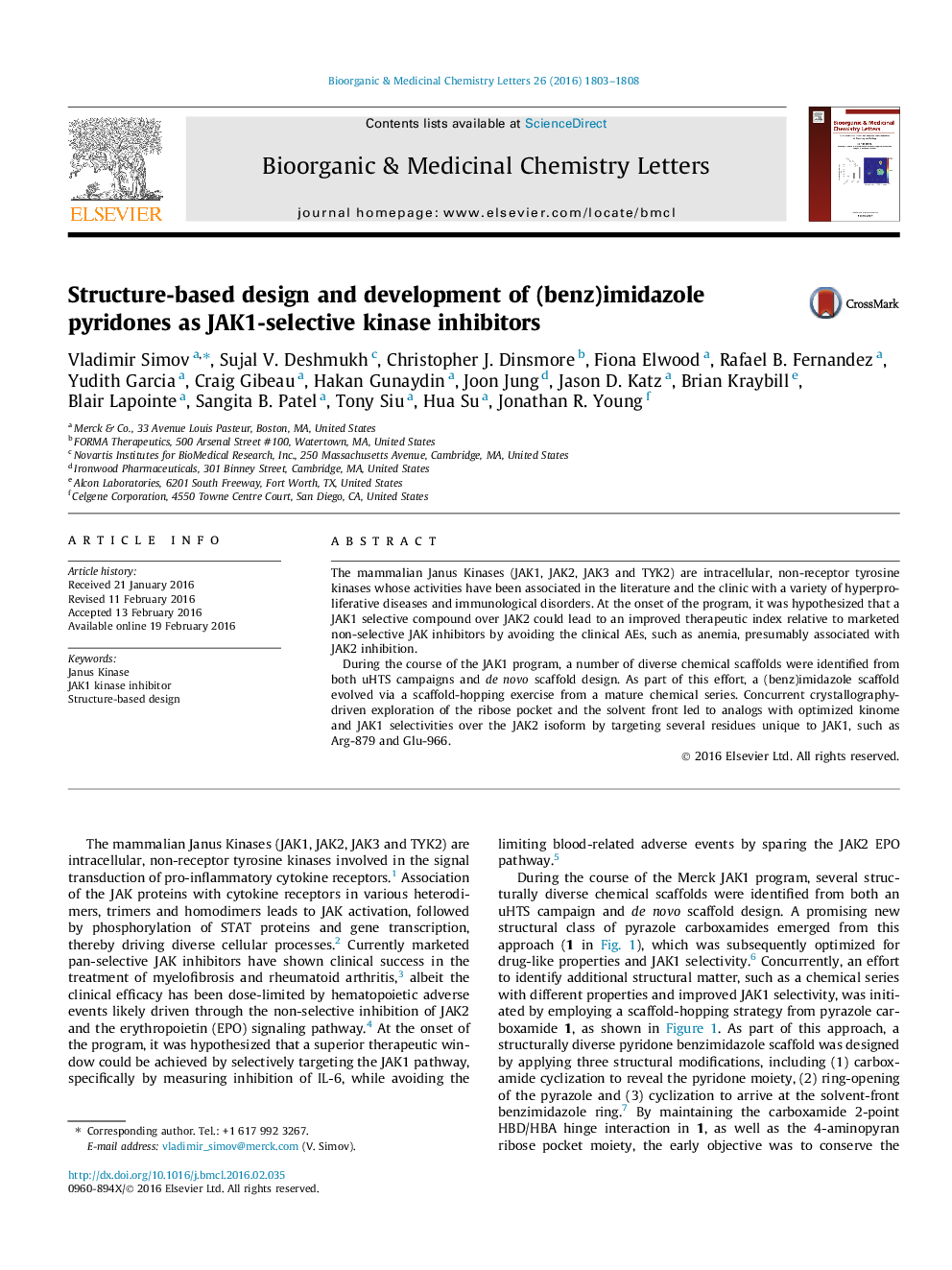| Article ID | Journal | Published Year | Pages | File Type |
|---|---|---|---|---|
| 1370026 | Bioorganic & Medicinal Chemistry Letters | 2016 | 6 Pages |
The mammalian Janus Kinases (JAK1, JAK2, JAK3 and TYK2) are intracellular, non-receptor tyrosine kinases whose activities have been associated in the literature and the clinic with a variety of hyperproliferative diseases and immunological disorders. At the onset of the program, it was hypothesized that a JAK1 selective compound over JAK2 could lead to an improved therapeutic index relative to marketed non-selective JAK inhibitors by avoiding the clinical AEs, such as anemia, presumably associated with JAK2 inhibition.During the course of the JAK1 program, a number of diverse chemical scaffolds were identified from both uHTS campaigns and de novo scaffold design. As part of this effort, a (benz)imidazole scaffold evolved via a scaffold-hopping exercise from a mature chemical series. Concurrent crystallography-driven exploration of the ribose pocket and the solvent front led to analogs with optimized kinome and JAK1 selectivities over the JAK2 isoform by targeting several residues unique to JAK1, such as Arg-879 and Glu-966.
Graphical abstractFigure optionsDownload full-size imageDownload as PowerPoint slide
